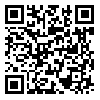The purpose of this study was to assess the fluoride release of three fluoride- containing materials exposed to fluoride solutions. This study compared the initial fluoride release and release following re-fluoridation (neutral or acidic 2% NaF) of three different filling materials, conventional glass ionomer cement (CG1C), resin- modified glass ionomer cement (RMGIC), polyacid- modified composite resin (PAMCR). Twenty discs of each material, measuring 2mm height and 6mm diameter, were suspended in separate vials of 2" laboratory artificial saliva. The amount of fluoride release was measured over two periods of 28 days each. Fluoride release was determined at 1,3,7,14 and 28 days of each period. Fluoride was measured with a fluoride ion- specific electrode and an ion analyzer previously calibrated with standard solution .T- test and ANOVA were used to evaluate the data. Fluoride release for all products at days 1 and 3 was significantly greater than the rest of the time intervals. Then, the fluoride release decreased significantly. CGIC released significantly more fluoride than the other products. This was followed by RMGIC, which exhibited significantly more fluoride release than PAMCR. In second period of experiment, the specimens were assigned to two subgroups often each. The samples exposed to two different solution of NaF (neutral or acidic). All groups showed the capacity of re-fluoridation and fluoride uptake. The specimens exposed to acidic NaF solution showed statistically more significant rechargeability than the neutral NaF solution. It may be concluded that glass ionomer cements act as a rechargeable slow fluoride release systems and as an effective caries preventive material in caries preventing programs for caries susceptible children.
| Rights and Permissions | |
 |
This work is licensed under a Creative Commons Attribution-NonCommercial 4.0 International License. |


